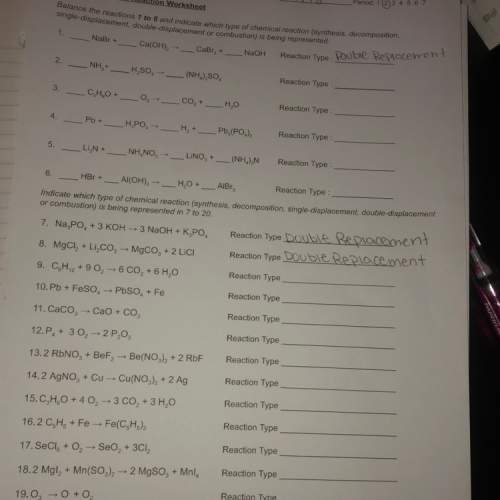1. Calculate the wavelengths for the following electron
orbit transitions.
a. n; = 3; n = 2<...

Chemistry, 27.01.2022 09:30 tylorroundy
1. Calculate the wavelengths for the following electron
orbit transitions.
a. n; = 3; n = 2
b. n;= 4; n = 2
c. ni=5;ne=2
d. n = 6; n = 2

Answers: 2


Another question on Chemistry

Chemistry, 21.06.2019 19:00
Which of the following best explains why the end of a spoon sticking out of a cup of hot water also gets hot? question 7 options: the heat from the hot water is conducted through the spoon handle the hot water heats the air surrounding the upper part of the spoon. the hot water causes a physical change in the spoon handle. the hot water causes a chemical reaction to take place in the spoon.
Answers: 2

Chemistry, 22.06.2019 07:30
Compare and contrast the bohr model and the electron cloud models of the atom.
Answers: 1

Chemistry, 23.06.2019 06:30
The molar mass of cu is 63.55 g/mol. the number of grams of cu produced in this reaction is
Answers: 3

Chemistry, 23.06.2019 10:30
When a chemist collects hydrogen gas over water, she ends up with a mixture of hydrogen and water vapor in her collecting bottle. if the pressure in the collecting bottle is 97.1 kilopascals and the vapor pressure of the water is 3.2 kilopascals, what is the partial pressure of the hydrogen?
Answers: 1
You know the right answer?
Questions


Mathematics, 24.03.2020 03:31


English, 24.03.2020 03:31

Mathematics, 24.03.2020 03:31



Mathematics, 24.03.2020 03:31


Mathematics, 24.03.2020 03:31


Computers and Technology, 24.03.2020 03:31



History, 24.03.2020 03:31









